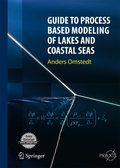
Mounting concern about the influence of humans on climate and environmental conditions has increased the need for multi-disciplinary modelling efforts, including systems such as oceans, lakes, land surfaces, ice, rivers and atmosphere. Scientists have traditionally developed specialized models limited to application within their own disciplines. Increasing effort, however, is now being put into the development of general equation solvers that allow users to create a code applicable to a broad range of problems. The use of computational fluid dynamics to analyse and predict changes in the environment has increased considerably during the past decades. Numerical models are now standard tools inboth research and in a wide range of applications. Provides a unique teaching tool for the systematic learning of aquatic modelling. Approaches ocean modeling from a new angle. Introduces aquatic modelling using a process approach. INDICE: 1. Introduction,- 2. Physical aspects,- 3. Biogeochemical aspect,.4. Coupled basis aspect: the PROBE-Baltic model system,- 5. Problems and solutions, -6. Appendices
- ISBN: 978-3-642-17727-9
- Editorial: Springer Berlin Heidelberg
- Encuadernacion: Cartoné
- Páginas: 300
- Fecha Publicación: 21/04/2011
- Nº Volúmenes: 1
- Idioma: Inglés
